Near JR Ueno Station there is a shopping arcade which stretches toward next StationOkachimachi along an elevated railway of JR Yamanote-Line for about 500 M.It is called “AME-YOKO Shopping Arcade”. At this arcade about 400 numbers of shops are selling foods, clothing, bags, watches, fine jewelries, cosmetic goods, sporting goods, ornamental accessories, medicines and miscellaneous goods. Getting out of Shinobazu-Guchi-Exit of JR Ueno Station, we can find out the entrance of Ame-Yoko shopping arcade across a street on the right side of JR line.It shows a different appearance and an atmosphere from Ginza, Shibuya and Roppongi which have orderly and fashionable townscapes.“Ame-Yoko” is wild and lively shopping arcade where a lot of small shops gather in dense clusters on the both sides of alley along the JR elevated railway.Sales staffs of every shop offer special bargain price to swarms of shoppers. They call out 1,500 in Jp. Yen. for plateful fish or fruits and then Yen, 1,500 as seeing shopper’s reaction. Finally they yell their rock bottom price, 1,000 in Jp. Yen with caustic words (“Tanka” in Japanese) to encourage shoppers’ bidding. Their loud and hoarse voices strangely linger in our ears for a while on the crowded alley.
The food sections of Ame-Yoko Center Building are selling Asian spices, Chinese vegetables, pork, beef and chicken. Surprisingly they are dealing pig ears and snouts, visceral meats, Chinese mitten crabs, frogs which are not familiar food stuffs to Japanese. Strange and weird smell stinks in nostrils there. We feel as if we were in market of local city in Asian countries.
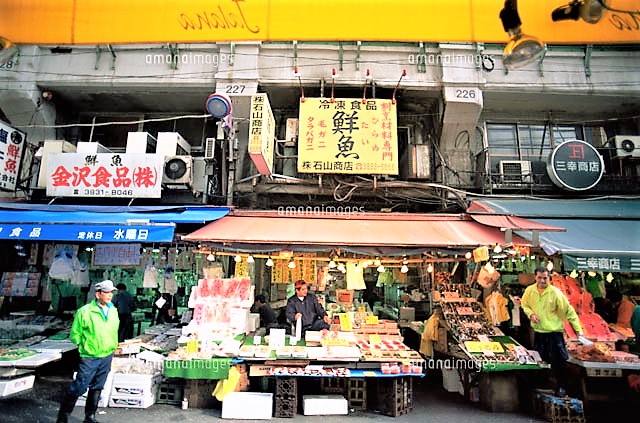
In addition other numerous small stalls are operating under the elevated railway and inside “Ame-Yoko Center” which is a triangular column-shaped building with 5-storied floors at the center of the arcade. They are all crammed full of their commodities.
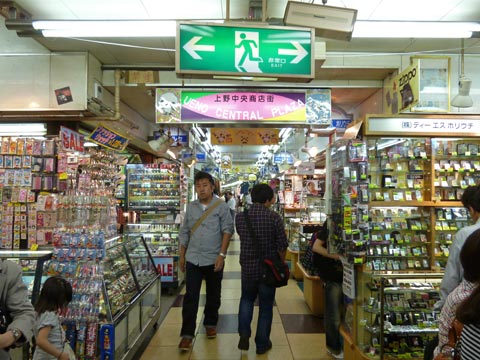
This area has been a logistic hub of railway transportation from way back because it is adjacent to Ueno Terminal Station where JR-Line,subway Ginza-line and Keisei-line are converging. Before the world War II, there used to be a transformer substation of National railway in the midst of many tenement row houses. During the war, the Japanese government compulsively removed or destroyed the substation and all the private houses in order not to let fire spread over to the surrounding areas. As a result, this area was being kept as a vacant space during the war. After Japan was defeated in World War II on August 15, 1945, a group of the demobilized soldiers from Machuria in China and Koreans & Chinese being remained in Japan, opened many shabby shacks called “Barrack” to sell living necessities in the vacant field. These were all unauthorized and illegal stalls. Thus a black market formed in the empty field. They frequently struggled for keeping the space of stall and it sometimes involved gangsters. The area was unsafe due to lawless market. It was called the black market of “No-Kami” which was a jargon of the black trade to indicate Ueno area. The area was too dangerous for ordinary people to enter into. In 1946, under the nomination and support by the regional administration, a neighborhood entrepreneur named Mr. Kondo established a shopping mall consisting of about 50 numbers of small creaky booths with 13M 2 space in the center of the lot where the Ame-Yoko Center building is currently located. Only credible sellers were chosen by him as the members of the mall while severely examining their background. This helped to purge bad elements and gradually improve upon the corrupt business practices in the market. In the postwar chaotic situation, the shortage of goods became serious all over Japan. The government introduced a rationing system of foods and daily necessaries. However even if ordinary people had tickets for the ration, they hardly got foods and living necessities due to the absolute shortage of the goods. So they were driven to buy those goods at the absurd high prices in the black market to stave off their hunger. In such critical condition, foods and living necessities were sold out immediately as soon as those were displayed in the stalls. Sales operation was brisk and lively in the shopping mall. The stalls in the mall were initially selling “Imo-Ame-candy” which was made of sweet potato and saccharin which substituted for sugar, since sugar consumption was severely controlled in rationing system. The saccharin is a synthetic sweetener introduced in U.S. The sweetness of the candy was the best tonic to cheer up people’s exhausted mind and body. The candy flew off shelves of stalls every day. In 1946 and 1947 there were around 300 of Ame-candy stalls in the shopping mall. This is why the area was named Ame-Yoko (literally candy alley). “Ame” means candy and “Yoko” stands for back street. Within several years after the war, the stalls in the mall were dealing such food as rice, wheat, beans, noodles, potatoes, dried squid and etc. and also used clothing, soaps, cups, wooden clogs, shichirins (portable clay stove for cooking), pots & pans and other living necessities. Shoppers were swarming and struggling at every stall to buy those goods even at the amazing higher price than usual, sometimes several score times of original price. Even so people were barely able to buy the goods. These goods were supplied through smuggling and illegally purchased from stockpile of Japanese government, stationed US soldiers, US army’s commissaries called “PX” (post exchange) and relief goods from US called LARA supply (Licensed Agencies for Relief in Asia). The deals were done sneakily behind police in the black market. In 1950 Japanese economy revived drastically on an account of special demand brought by the Korean War. Ame-Yoko was selling illegally purchased jewelries, cosmetic goods, cameras, watches, fountain pens, leather articles, fashionable costumes and also even such medicine as streptomycin which was a specific remedy for the Japanese national disease of lung tuberculosis at that time. When Japanese economy entered the phase of high growth in 1955, people’s life significantly improved. People showed their interest in buying valuable imported articles such as Max factor cosmetic goods, Johnnie walker whisky, Swiss chocolates, cigarettes, branded wrist watches, Cross ball point pen, Parker fountain pen, Zippo oil lighter, Ronson/Dunhill/Dupont gas lighters, scarfs and so on, which were still limited in the ordinary market.
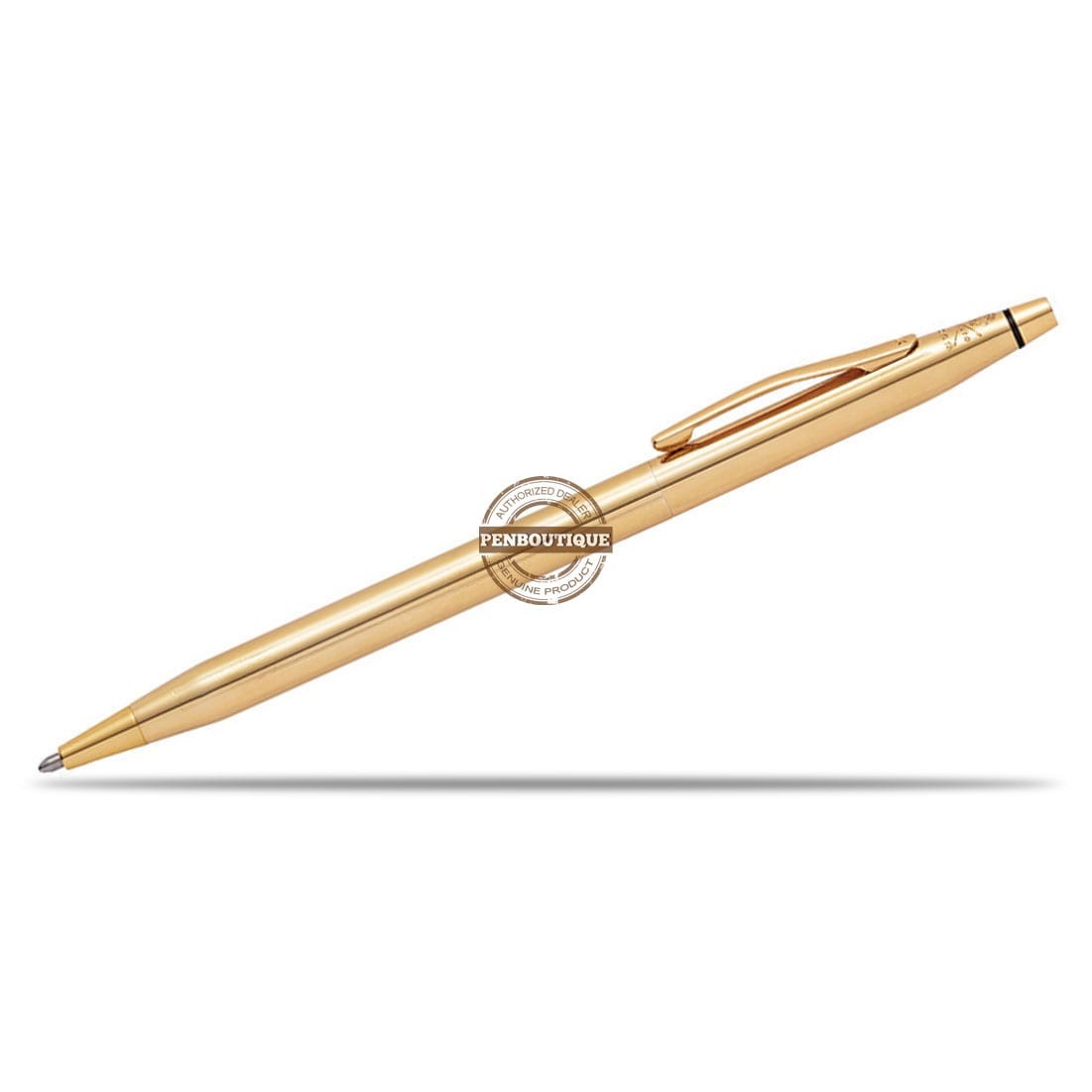

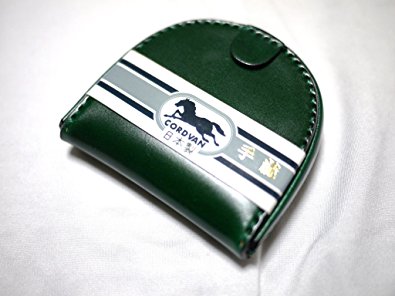
A fancy imported wrist watch called “Nankin-Mushi” (meaning bedbug) was popular and attractive to ladies. Its frame is made of solid gold and covered with facetted clear glass. It formed a tiny oval shape. Its funny naming comes from the shape of the watch that looks like a bedbug coming from overseas. Most of articles dealt in Ame-Yoko were purchased through legally authorized channels at the time. And also such food stuffs as fish, vegetables, fruits, coffee, tea, dried foods were plentifully provided at the attractive price level in the Ame Yoko. Many migrant workers who gathered in Tokyo from local cities, bought salted salmons in Ame-Yoko market as a souvenir for their family and brought it back to their home town to spend new year holiday. It was an annual common scenery observed in Ueno Station at every year end. Ame-Yoko became a popular and attractive shopping arcade to buy valuable imported goods at lower price than those offered by department stores or specialist shops. Strolling around Ame-Yoko shopping arcade recently, we find out such a trend that only limited numbers of people are buying valuable imported goods. The number of Japanese travelers to foreign countries surpassed 10,000,000 in 1990. They can buy valuable foreign articles in duty-free shop during their trip. And also those articles are plentifully available in department stores, specialist shops, discount shops in domestic market and even through internet shopping. In addition, the overseas brand goods can be gotten in their sales branches in main cities in Japan. People now have a lot of options to buy those goods. It appears that those factors are giving an influence on the decrease of sales of imported goods in Ame-Yoko. In current Ane-Yoko it is conspicuously observed that peoples from Africa, Asia and Middle East open their food stalls being accommodated with simple tables and benches along the alley. They serve Chinese Dim Sum (steamed meat dumpling), Indian Curry and Nan, and Turkish Doner Kababi (Slicing beef off rotating vertical spit). Among Japanese dishes “Kaisen-Don” (Rice bowl topped with seafood) is popular to foreigners. Customers in those stalls are mostly Asians.
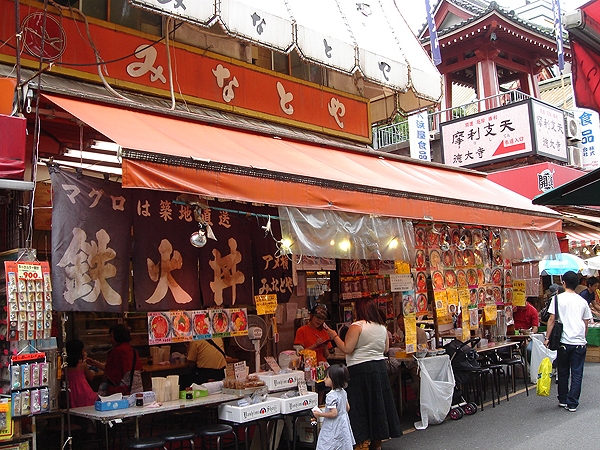
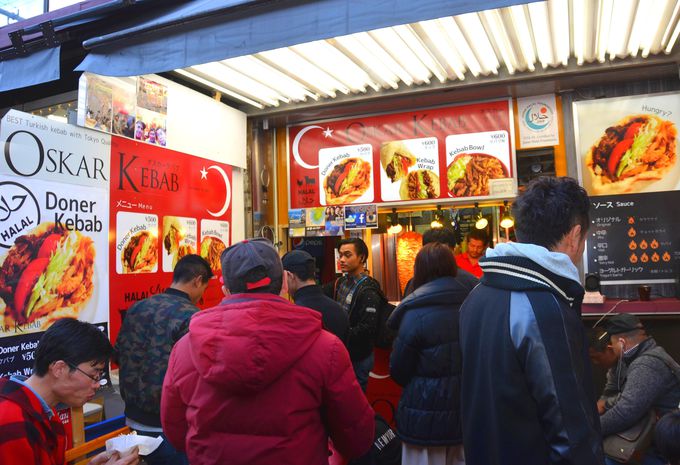
The food sections of Ame-Yoko Center Building are selling Asian spices, Chinese vegetables, pork, beef and chicken. Surprisingly they are dealing pig ears and snouts,visceral meats, Chinese mitten crabs, frogs which are not familiar food stuffs to Japanese. Strange and weird smell stinks in nostrils there. We feel as if we were in market of local city in Asian countries.
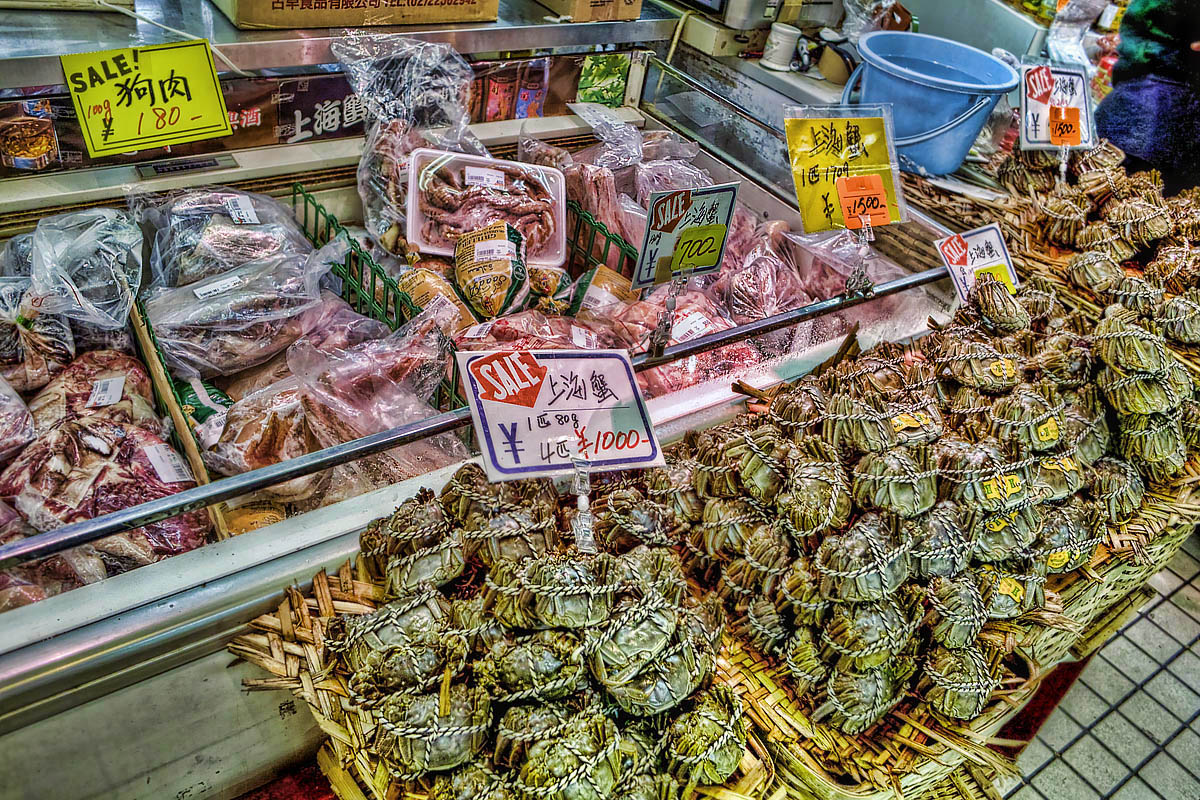
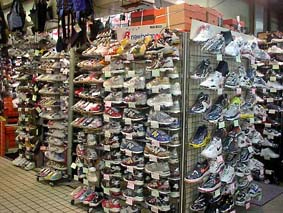
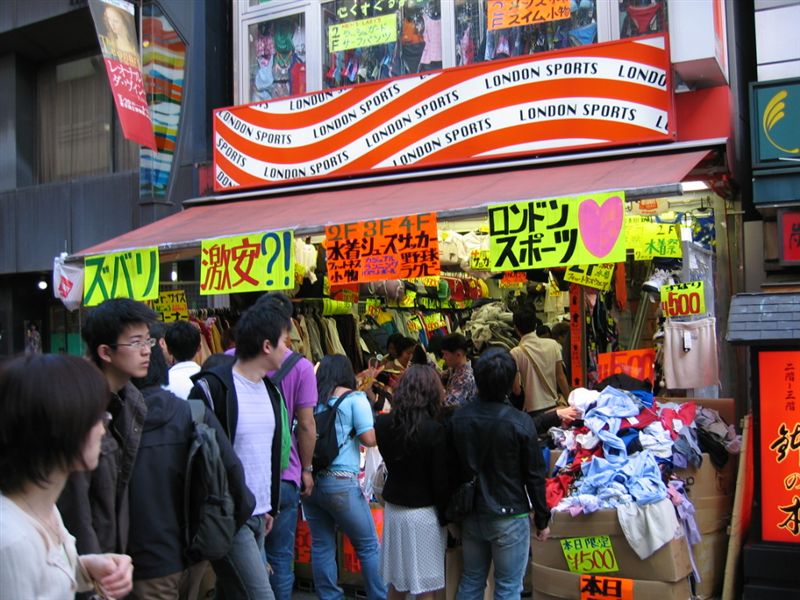
In the meanwhile the old timers survived and they are successfully dealing conventional commodities such as fish, fruits, candies, confectioneries, seaweed, soy beans, sweet beans, peanuts, dried kelps and other dried foods in Ame-Yoko market.They still have deep-rooted popularity in the market.
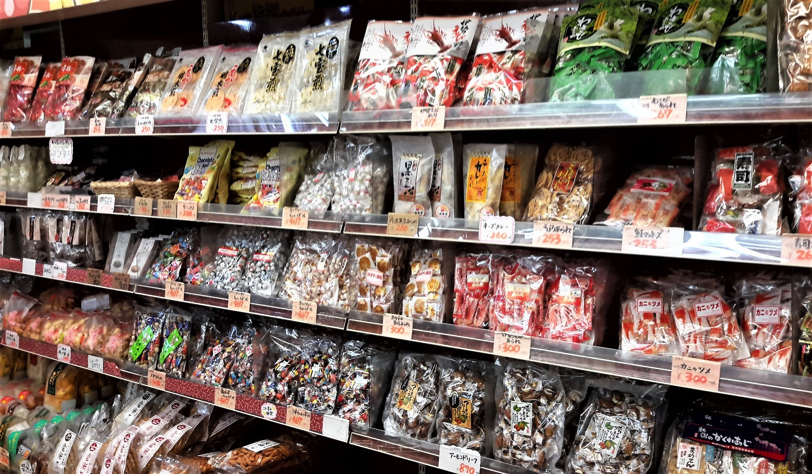
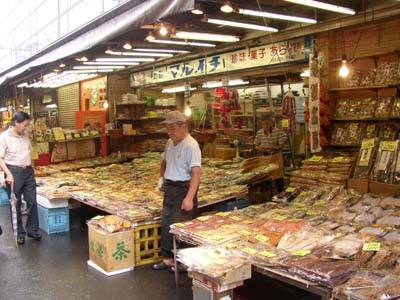

Passing through Ame-Yoko from Ueno Station to Okachimachi Station, you happen to hear various Asian languages such as Chinese, Korean Hangul, Phillippines Tagalog,Thai and Bahasa Indonesia.Ame-Yoko presents a nostalgic scenery of downtown market which is observed in Night Market in Taiwan, Hong Kong and Thailand.More than 100,000 people visit this market per day on average. At the end of year around 500,000 people enjoy shopping in the arcade.We can find out a mixture of diversity, friendliness and internationality in this down town market.
Jewelry Town Okachimachi.
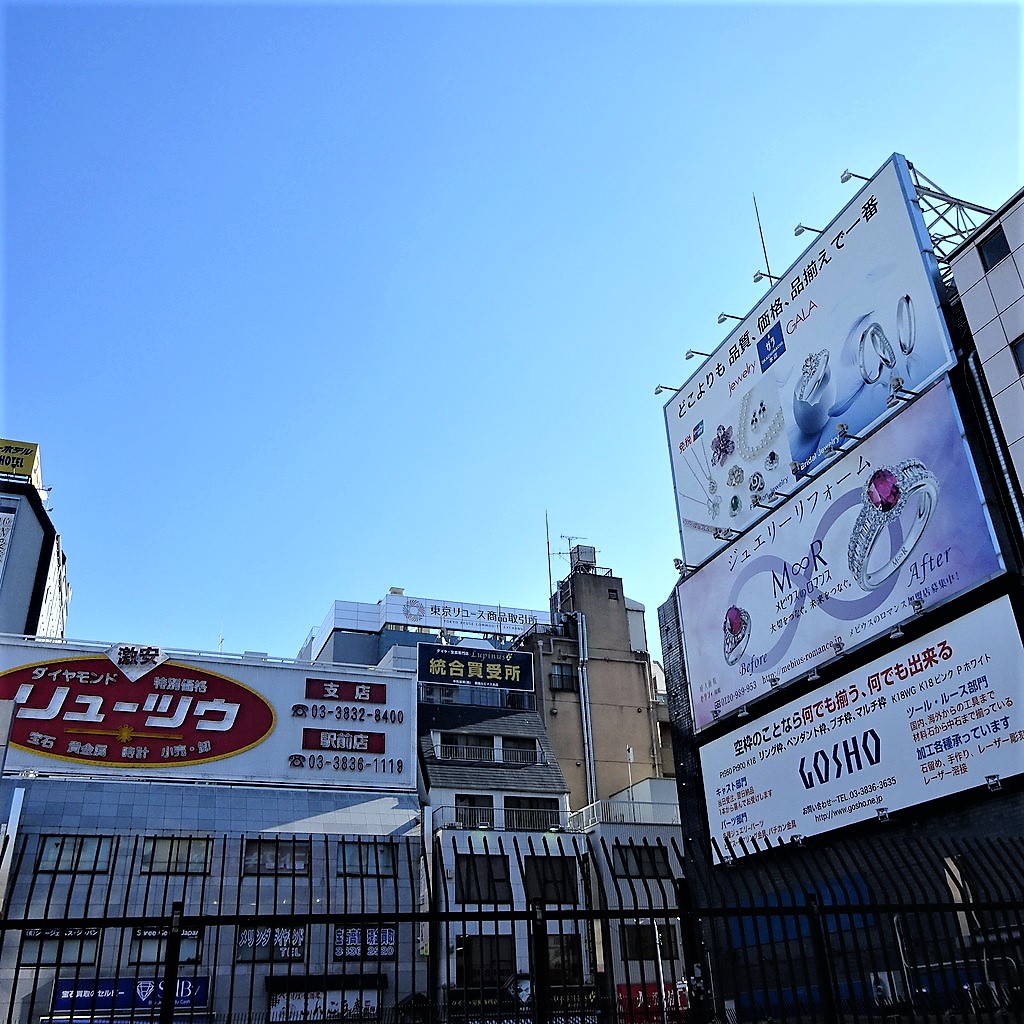
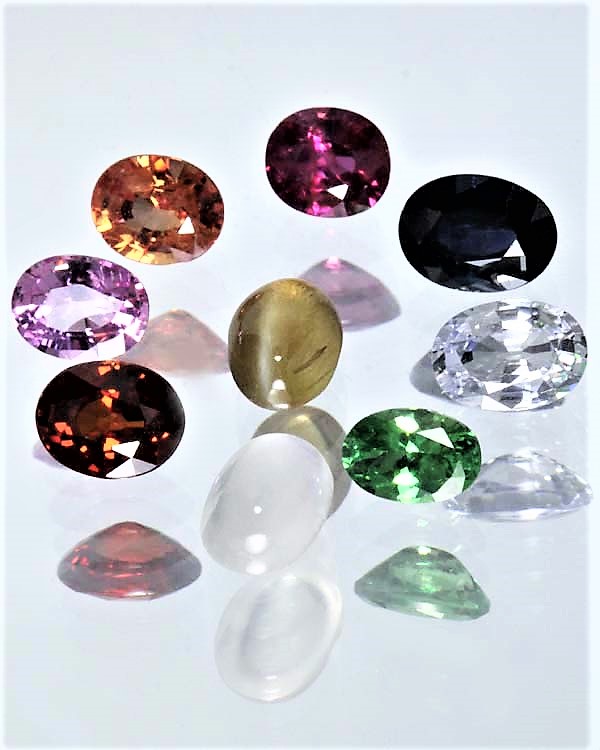
“Okachi” from Shogunate was too small to make a living,There used to be numerous temples and shrines in the vicinity of Okachimachi, And also the amusement and entertainment areas were located in their neighborhood Asakusa, Yosiwara, Yanagibashi, Kuromon, Yushima,Nezu.They needed Buddhist altar fittings and ornamental articles such as hairpins combs made of tortoiseshell,handicraft of vory/coral/gold and silver.In response to the demand, Okachi (guardian soldiers) set out to manufacture and sell those articles.When the times turned into Meiji Period from Edo, People’s life style had been gradually westernized because of government’s modernization policy.The change raised the demand for western-style fine jewelry. Following this movement,the craftsmen who are originated in Okachi started to engage in business of the fine jewelry. They were mainly making and selling finger rings. This said to be the origin of Jewelry Town Okachimachi.
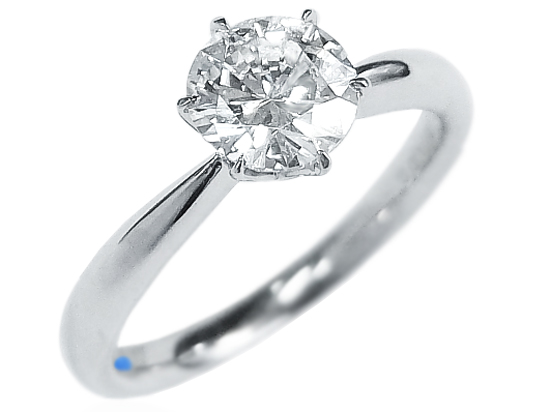

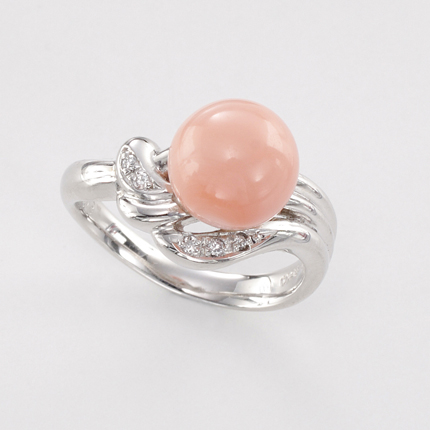
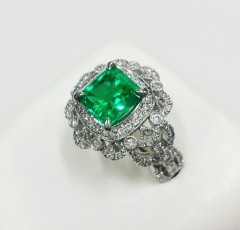
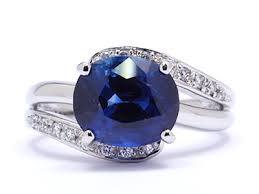
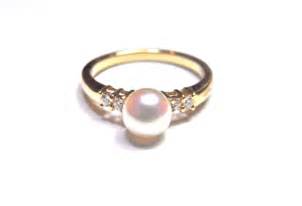
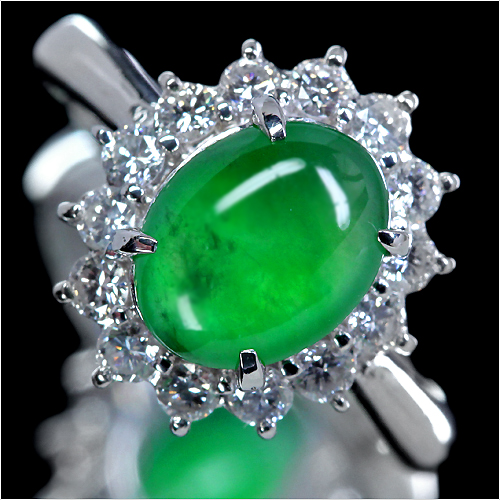
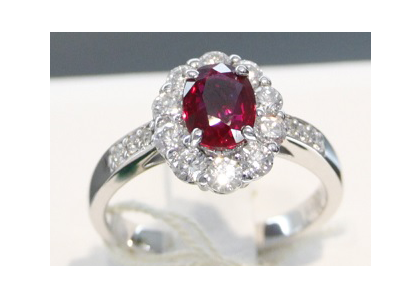
After the Word War II, American soldiers of occupation forces set about to sell their personal wrist watches and accessories to get their extra income in black market in Ame-Yoko.The craftsmen in Okachimachi also involved in dealing with and repairing of these smuggled goods as a back yard of Ame-Yoko market.They also handled used watches and jewelries which were sold by ordinary people in order to survive in post war chaotic society. They periodically opened the market for the used goods.These dealers were initially scattering around Okachimachi Station and Ueno Station.Later on they gathered together in the present quarter on the east side of Okachimachi Station in consideration of the convenience of local dealers after around 1956. When the jewelry business started looking up explosively in 1965, the locality became very lively. This further attracted other specialist shops in that area.They were dealing necklace, bracelets, earrings, jewelry frame, jewelry boxes, pearls and gem stones such as diamond, sapphire, emerald, ruby, jadestone, garnet, opal, agate, crystal and others.
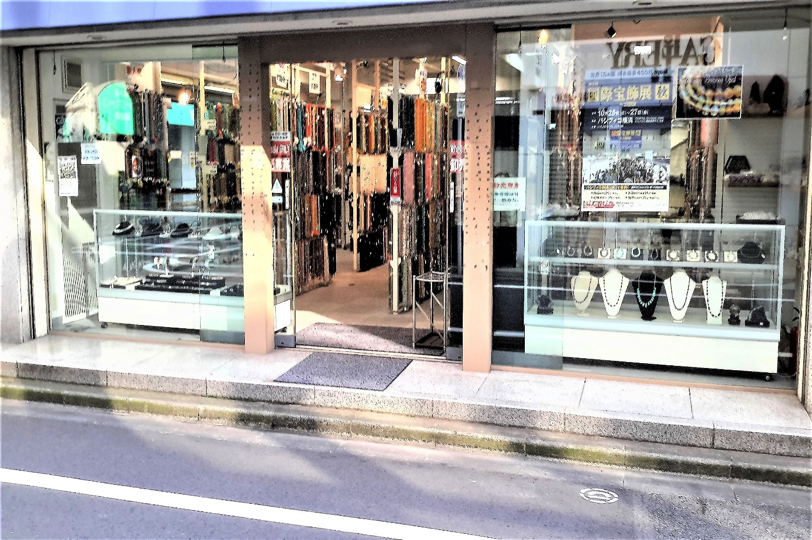
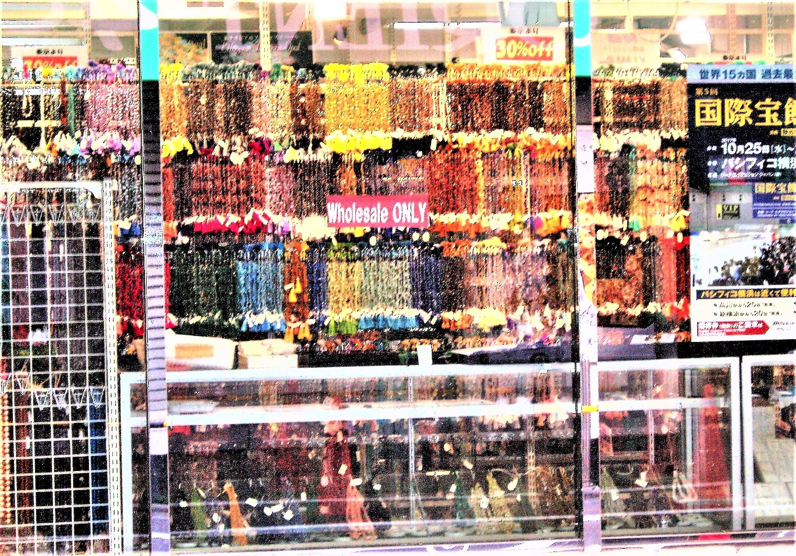
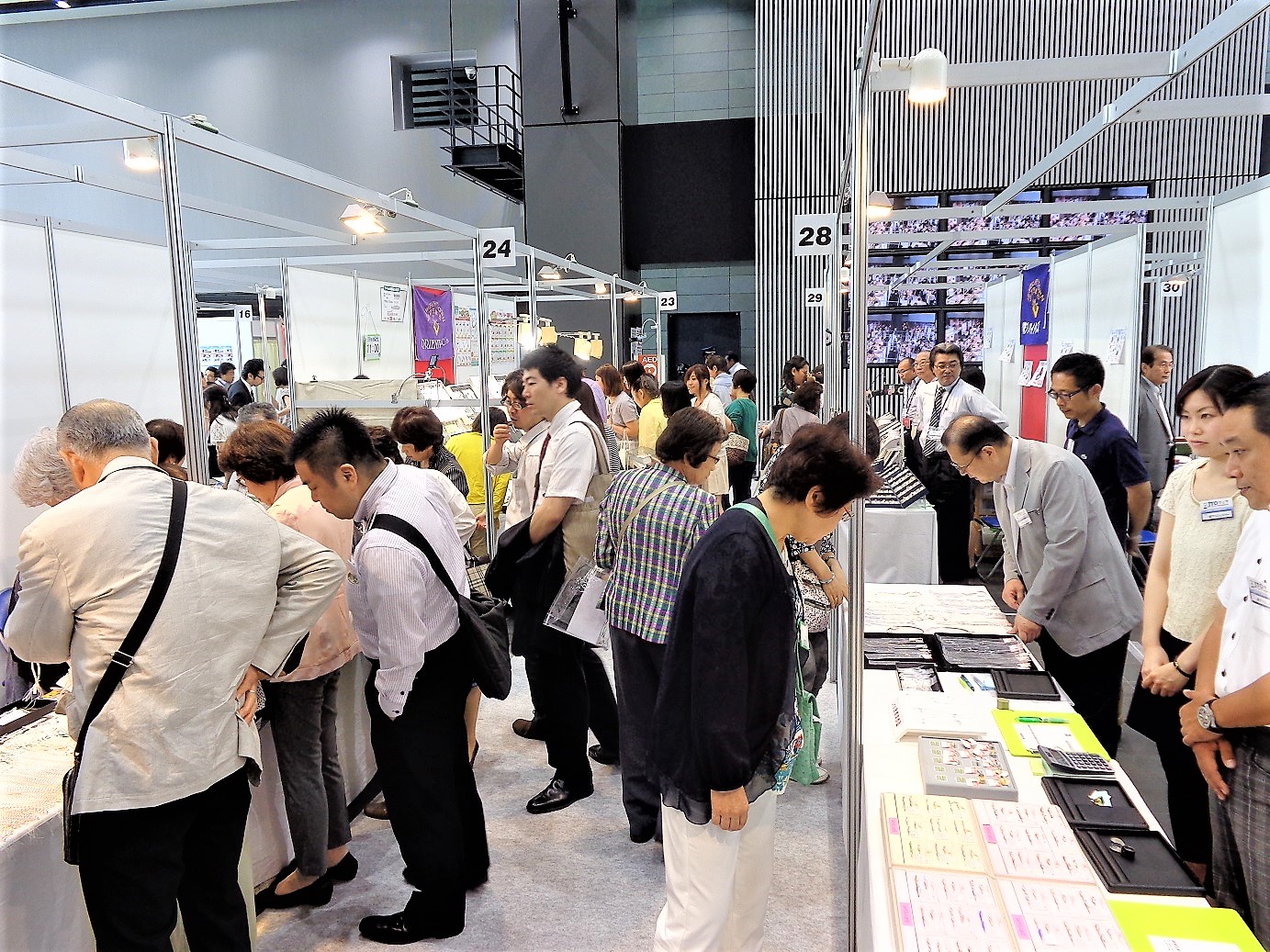
Through various phases of the transition, Jewelry Town Okachimachi (JTO) was established by 159 dealers in the quarter in 1987. The JTO became the biggest cooperative jewelry town in Japan. They named alleys in the area like garnet alley, diamond, jade stone, emerald, ruby coral and sapphire. These alleys intersect each other like meshes of a net in the area. Around 1,800 dealers are operating in that area and about 200 out of 1,800 engage in retail sales. Most of them were whole sellers and they do not respond to individual consumers. The retail sellers gather in the corner near Okachimachi Station. The annual turnover of JTO amounts to about 80 billion in Jp Yen now. They have conservative and close-minded sales attitude differently from friendliness and familiarity which we feel in Ame-Yoko shopping arcade since they are handling valuable commodities.However it might be fun for us to appreciate beautiful and valuable jewelries through show window of each shop while strolling the biggest jewelry town.
